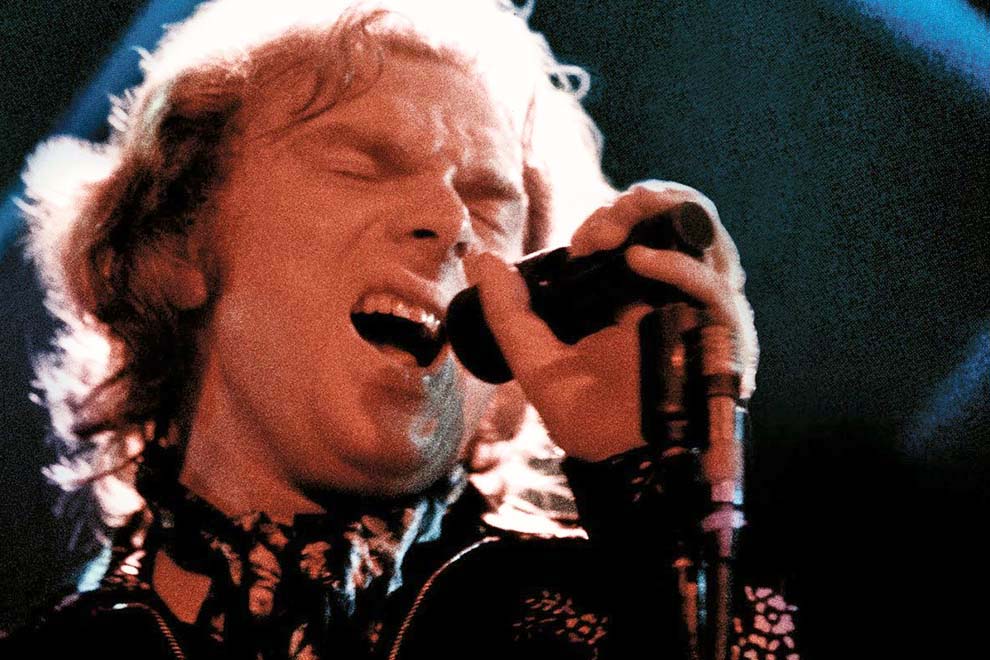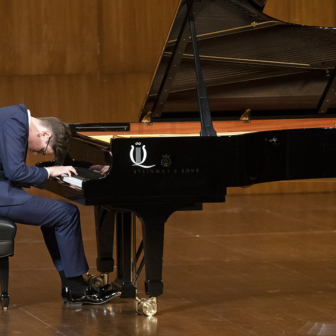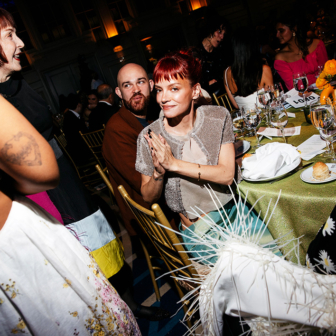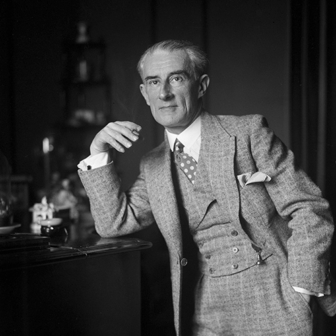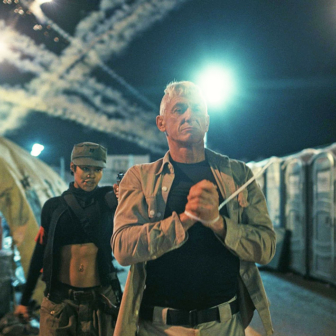I have long believed Van Morrison’s double album It’s Too Late to Stop Now (1974) to be the greatest rock concert ever recorded, though I know that strictly speaking it’s not. For one thing, it isn’t one concert, it’s eight – in three different venues; and then, as Van the Man himself grumpily insisted in his song “Goldfish Bowl” (2003), he sings “Jazz, blues and funk / That’s not rock-and-roll / Folk with a beat / And a little bit of soul.” Mind you, Van says all sorts of things, and they’re not always true. For a start, there’s his first big hit, “Gloria,” which certainly is rock-and-roll.
You can neatly divide Morrison’s output into songs of innocence and experience, the distinction apt enough for one who has sung William Blake’s words and also sung about Blake. Well, give me the songs of innocence, any day! From “Madame George” to “Summertime in England,” from “Tupelo Honey” to “Listen to the Lion,” from “A Sense of Wonder” to “In the Garden,” Morrison’s best work is his most wide-eyed. In it he unleashes his most spontaneous singing, and also that tendency to leave the words behind altogether, heading off into the music, into the mystic.
Morrison’s last important album of original material, nearly twenty years ago, was The Healing Game (1997) and it was underrated. Here was a performer whose Protestant work ethic still drove him to release approximately an album a year, as he had since the 1960s, and it wasn’t immediately obvious that something special had occurred on this one. But it was, in many ways, the climax of his career – all that singing about Ireland, all that crying for home, and now finally he was home. Ever since, his records have been dominated by the songs of experience, where he gripes about the music industry, his record label, fellow musicians, journalists, critics and even his fans with a self-destructive tendency that wouldn’t matter in the least if it didn’t result in such routine music and ordinary singing. The other thing he’s done rather a lot of since 1997 is sing old songs – his own and those of others. Most of these recordings have proved to be routine as well. Next month comes a new studio album. Let us not get our hopes up.
Meanwhile, the good news for Morrison fans is that It’s Too Late to Stop Now has been remixed and remastered, while the great news is that volumes two, three and four have been released for the first time. The original album included songs taped at the Troubadour in Los Angeles, the Santa Monica Civic Center and the Rainbow Theatre in London, though you would never know. From the gentle, sauntering start of Bobby “Blue” Bland’s “Ain’t Nothing You Can Do” to the dramatic, almost manic conclusion of “Cyprus Avenue,” the album has the ebb and flow of a single concert. The new discs contain highlights from each venue in turn, beginning in Los Angeles in May 1973 and fetching up in London in late July. And, for good measure, there’s a DVD containing a BBC TV recording of some of the Rainbow concert, with a singer who sounds like Van the Man, but looks like Van the Boy.
There are no overlaps between this new material and the 1974 release, the forty-five new tracks containing some of the same songs from different sessions, some songs that were never on the original release and even a few that have never been released at all. Most notable among these is “I Paid the Price,” apparently about the break-up of Morrison’s marriage, co-credited to his guitarist of the time, John Platania. There are versions from both Santa Monica and the Rainbow, and it sounds like a Morrison classic that just needed a bit more work.
Unreleased material aside – did we really need to hear him (twice!) singing Louis Prima’s “Buona Sera, Signorina”? – the most interesting aspect of the new material for a Morrison aficionado will be the chance to follow the musical progress across two months of the singer and his band. And was there ever a better Morrison band than the Caledonia Soul Orchestra?
Some of the differences are subtle – the version of “Ain’t Nothing You Can Do” from Santa Monica is a shade faster than the familiar version, and sounds a little breathless – but others offer great contrast. The seductive lilt of Willie Dixon’s “I Just Want to Make Love to You” on the 1974 release, with that perfectly timed string quartet pizzicato note in place of the word “love,” is nearly replicated in the slightly fuller arrangement of the song at the Rainbow Theatre, but it’s utterly different to the much faster performance from the Troubadour, which almost matches the tempo of the Rolling Stones’ famous recording. There are two barely recognisable performances of “Sweet Thing” that whirl along like a fast waltz. And how wonderful to be able to compare three live versions of “Caravan” recorded so close to one another: each begins with the familiar piano trill, and then Van proceeds to reinvent the vocals.
What is clear from listening to these new live sets is that the original choices were correct; they picked the best versions in every case. But, because it is Van Morrison, and he’s such a gloriously spur-of-the-moment performer, all the newly released tracks are worth hearing. He even manages to turn Kermit’s “Bein’ Green” into a profound experience, ecstatic at the Troubadour, tragic at the Rainbow.
One last thought. We know that in these 1973 shows, Van had begun singing songs that would appear on the following year’s Veedon Fleece. There are none here, but since the tapes of the concerts clearly exist, perhaps there’s a fifth volume lurking somewhere containing an early account of “Streets of Arklow.”
Meanwhile, on he goes. Now it’s an album every four years. Next month’s is called Keep Me Singing. •
